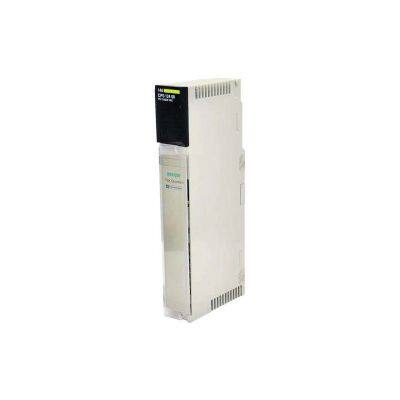I. Overview
Schneider 140DDO88500 is a digital output module specifically designed for the precise control and safe operation of medium and high-power discrete actuators in industrial scenarios. Serving as a key control hub between the control system and on-site digital execution equipment (such as AC contactors, high-power solenoid valves, motor starters, and alarm lights), this module can efficiently convert digital commands from the control system into high-voltage signals that drive actuators. It also integrates multiple safety protections and full-dimensional fault diagnosis functions, providing stable and reliable control support for sequence control of industrial processes, equipment start-stop, and safety interlocking.
It is widely used in industrial automation fields with strict requirements for the reliability and stability of digital output control, including petrochemicals, power generation, metallurgical rolling, automobile manufacturing, heavy machinery, and municipal engineering. The product adopts a modular reinforced design and an industrial-grade circuit architecture, featuring wide load adaptation, multiple isolation protections, convenient integration, and long service life. As a standard compatible module for the Modicon Quantum series, it can be seamlessly integrated into the system rack. When used with Concept or EcoStruxure Control Expert programming software, it enables rapid parameter configuration and fault localization, offering a cost-effective solution for medium and high-power load control in complex industrial environments.
II. Technical Parameters
III. Functional Features
IV. Working Principle
V. Common Faults and Solutions

Send Inquiry to This Supplier
You May Also Like
-
SCHNEIDER 140CPU11302 Core Processor ModuleNegotiableMOQ: 1 Piece
-
Schneider 140CPU31110 MODICON QUANTUM Series Unified ProcessorNegotiableMOQ: 1 Piece
-
Schneider 140CPU43412A High-performance Processor ModuleNegotiableMOQ: 1 Piece
-
Schneider 140CPU65260 Control Processor ModuleNegotiableMOQ: 1 Piece
-
Schneider Electric 140CPU67160 Hot Standby CPU ModuleNegotiableMOQ: 1 Piece
-
Schneider 140CPU67160C Modicon Quantum Series Processor ModuleNegotiableMOQ: 1 Piece
-
Schneider Electric 140CPU67260 Multi-mode Processor ModuleNegotiableMOQ: 1 Piece
-
Schneider 140CRA31200 Ethernet IO Station Adapter ModuleNegotiableMOQ: 1 Piece
-
140CRP31200 Schneider Remote EIO Head ModuleNegotiableMOQ: 1 Piece
-
Schneider BMECRA31210 Remote I/O Expansion Communication ModuleNegotiableMOQ: 1 Piece









































